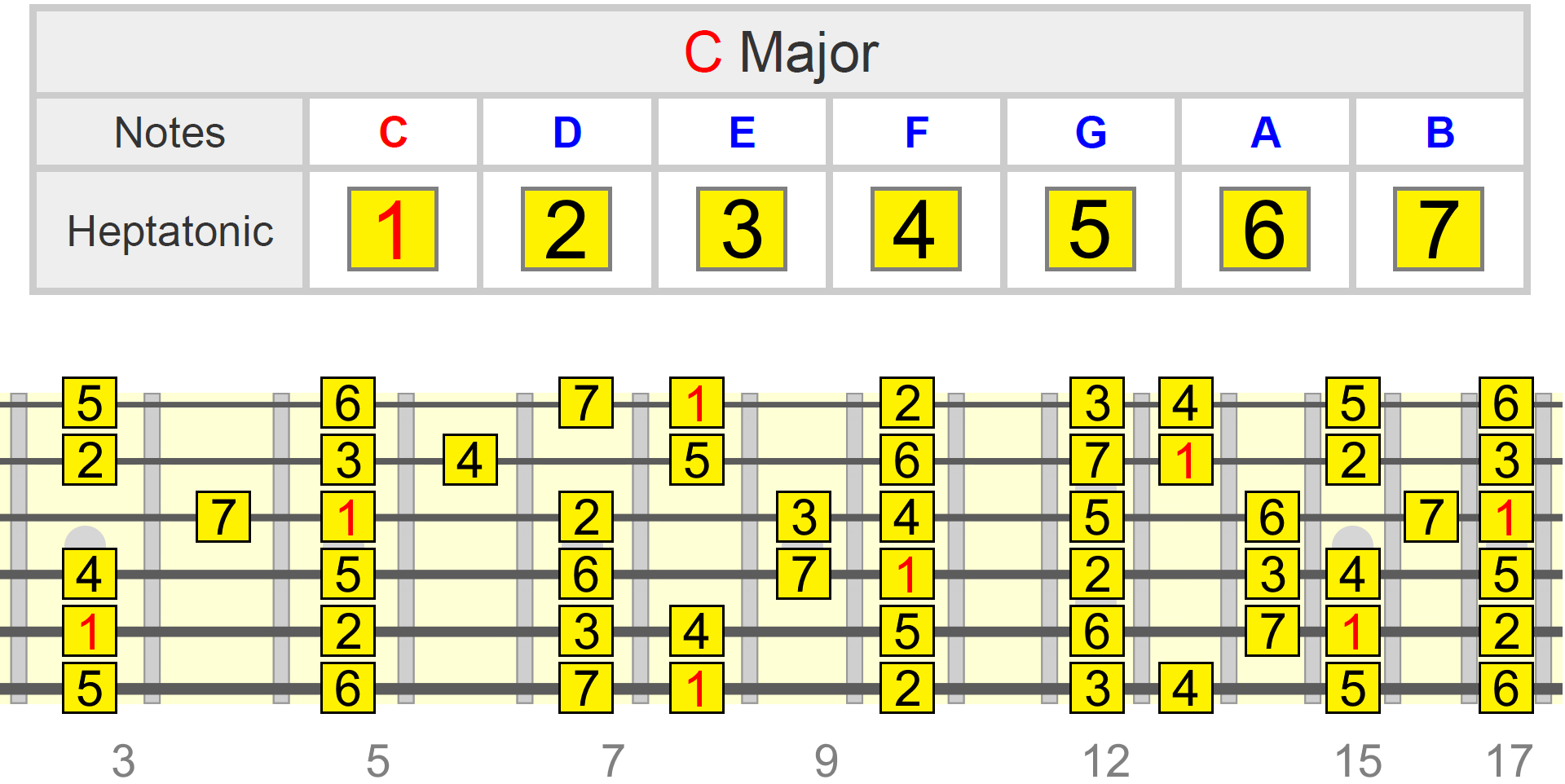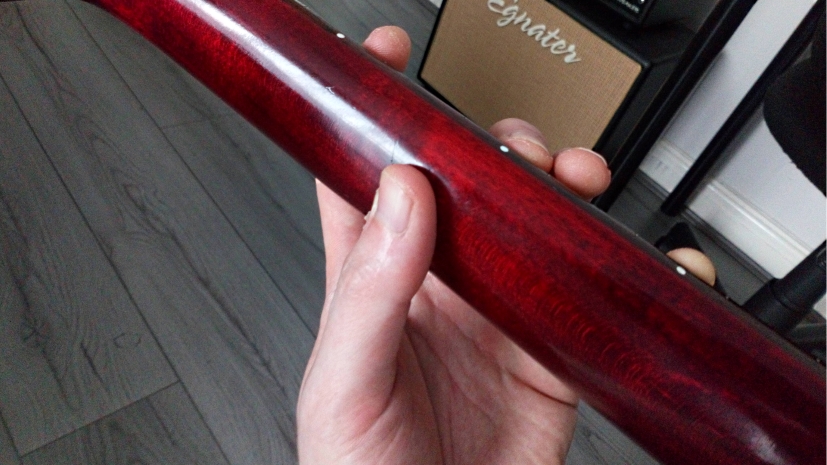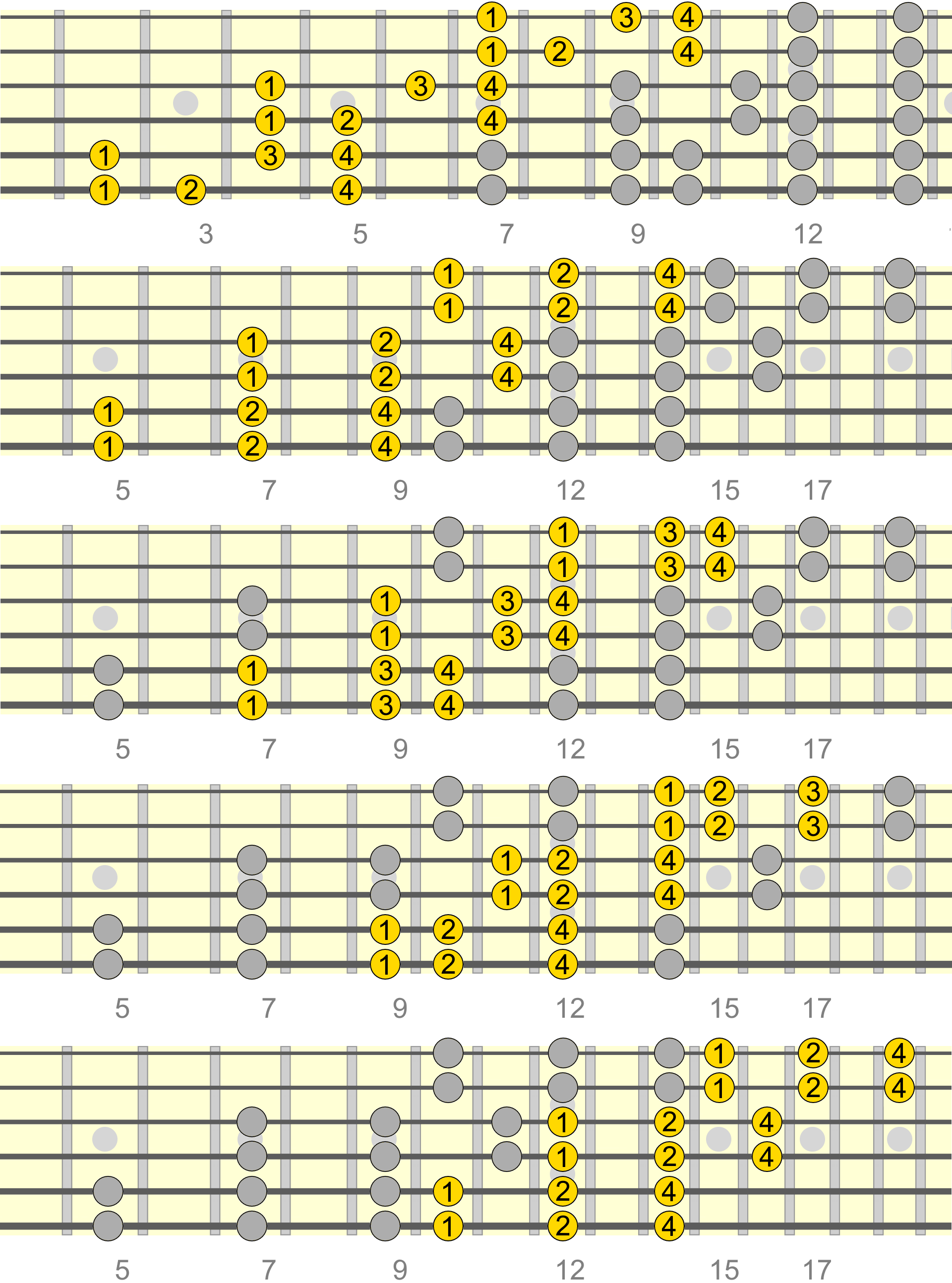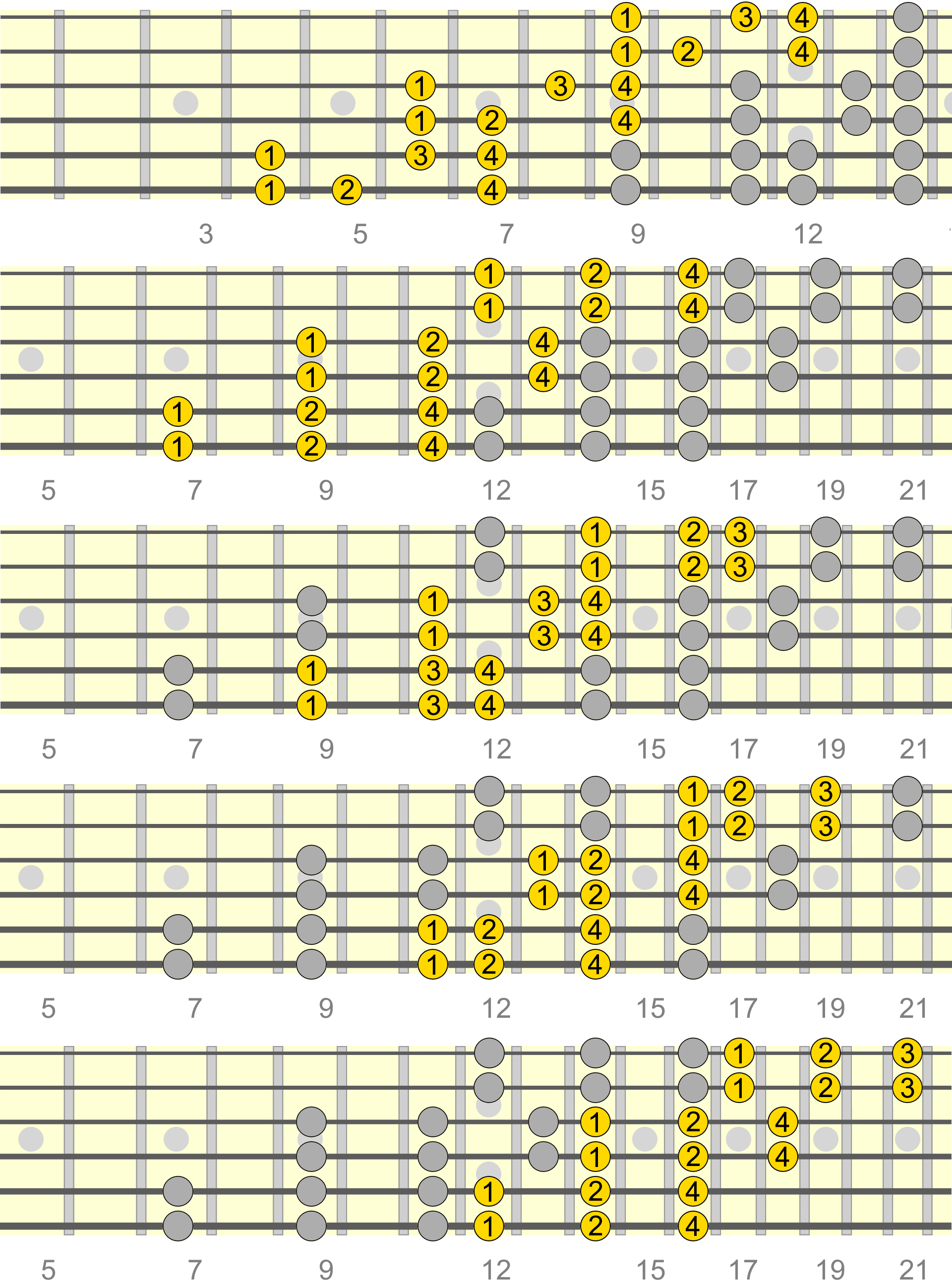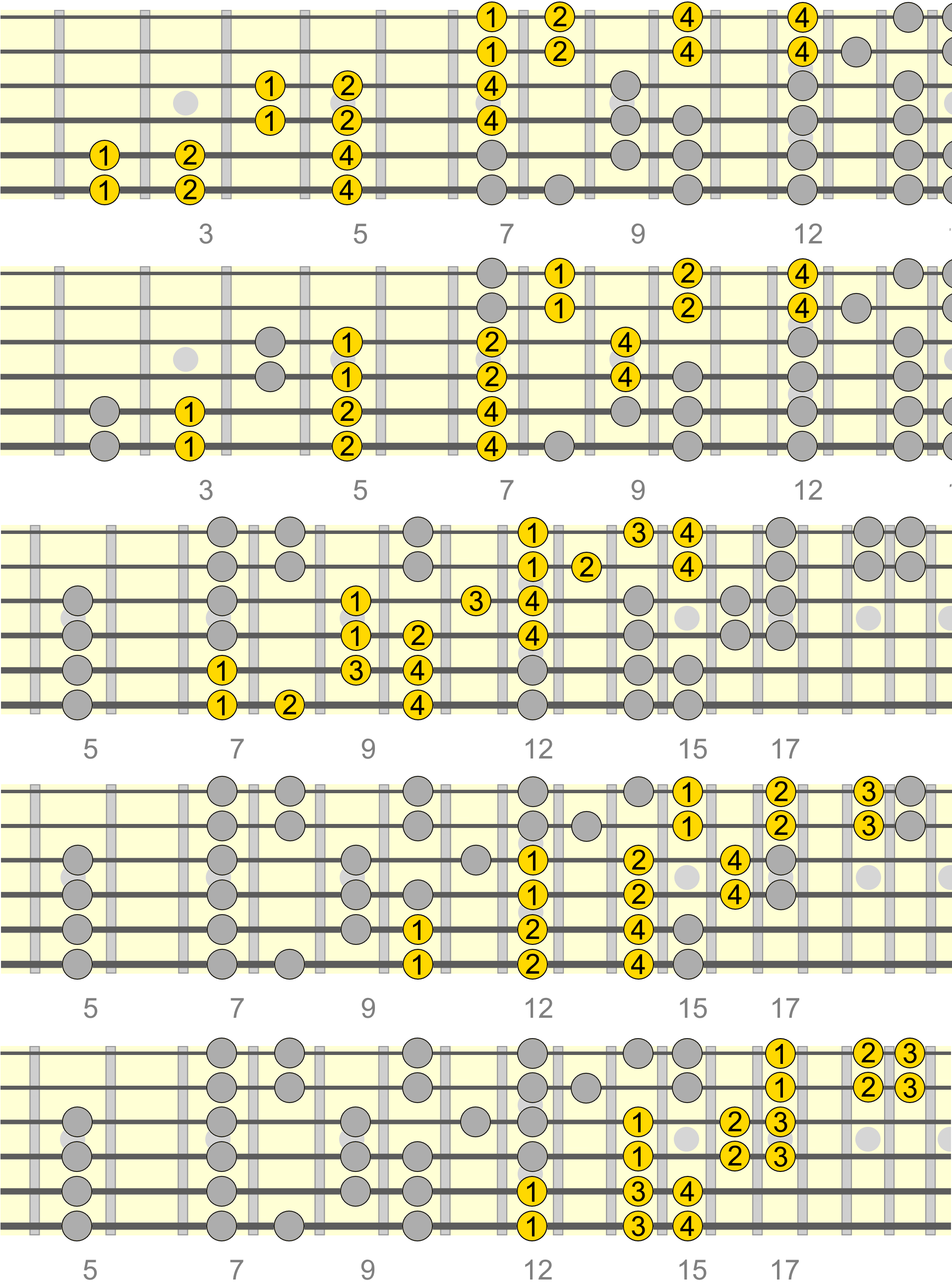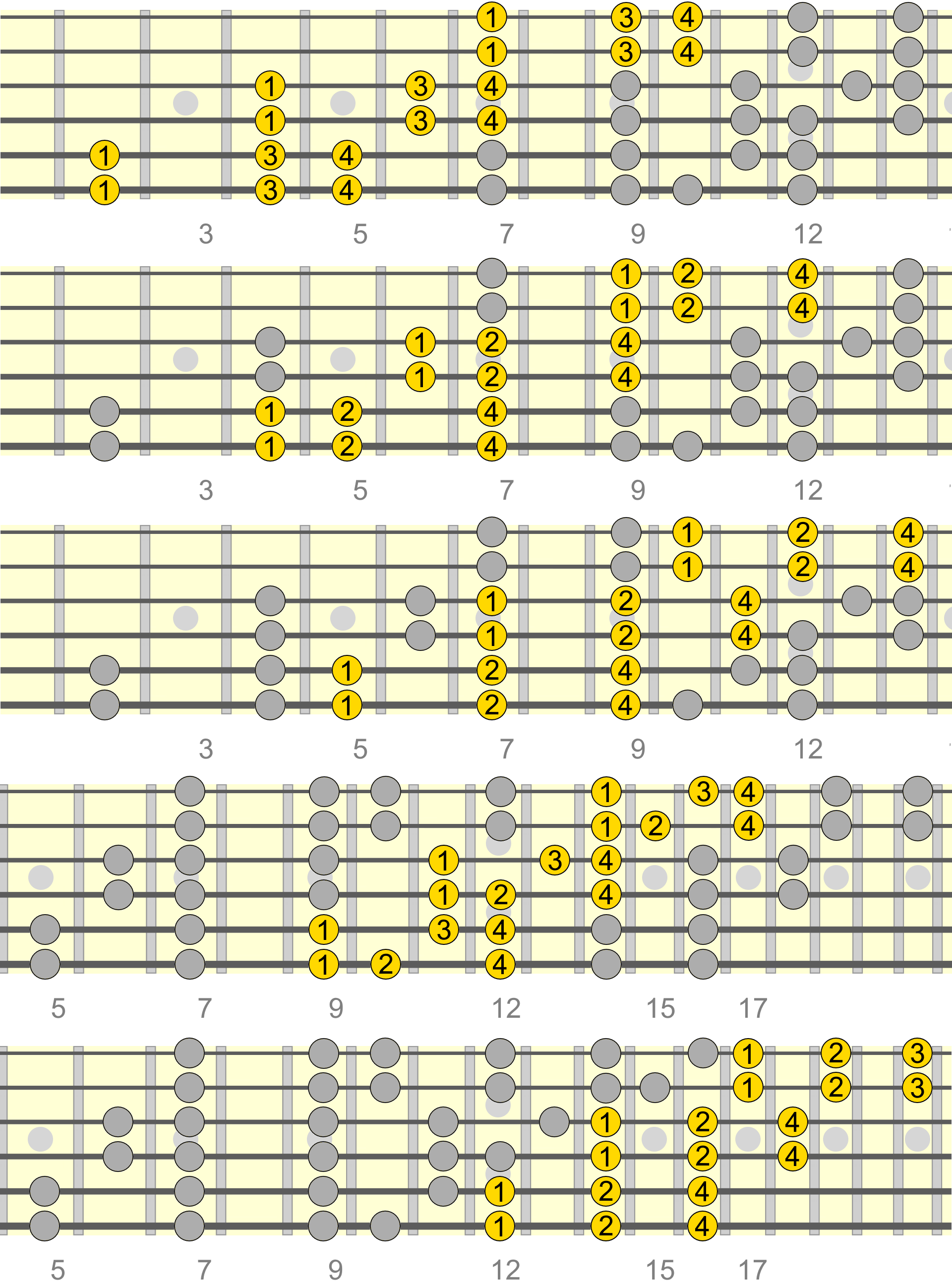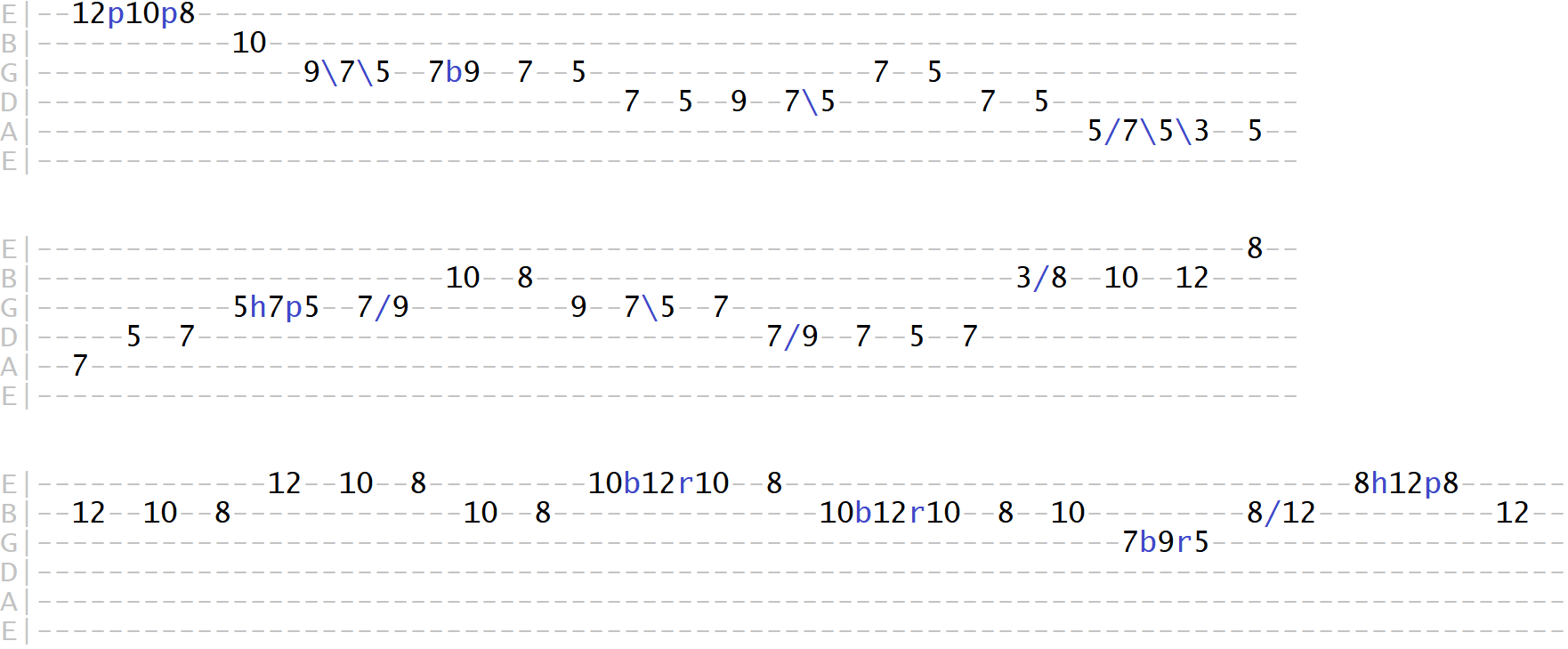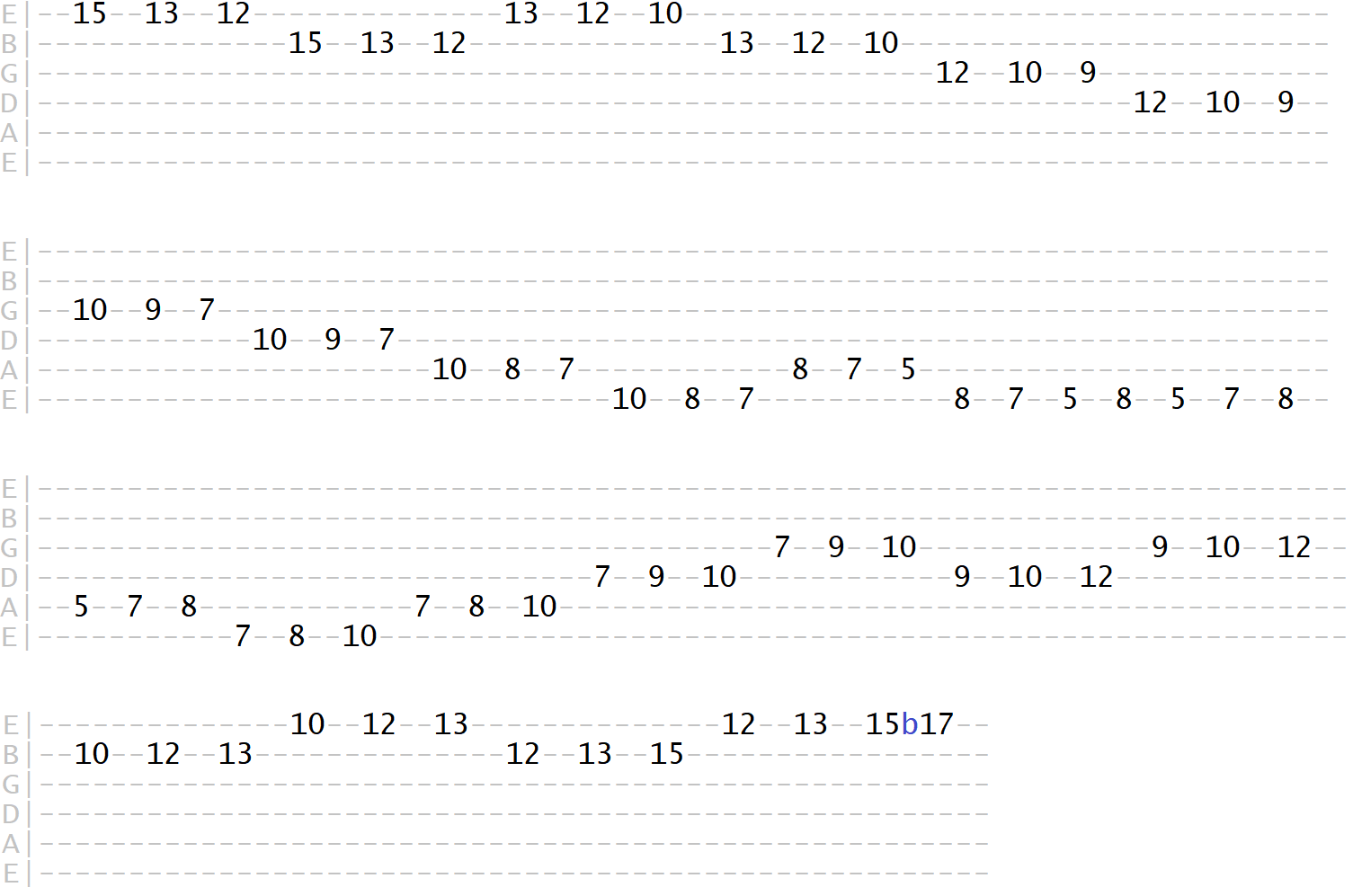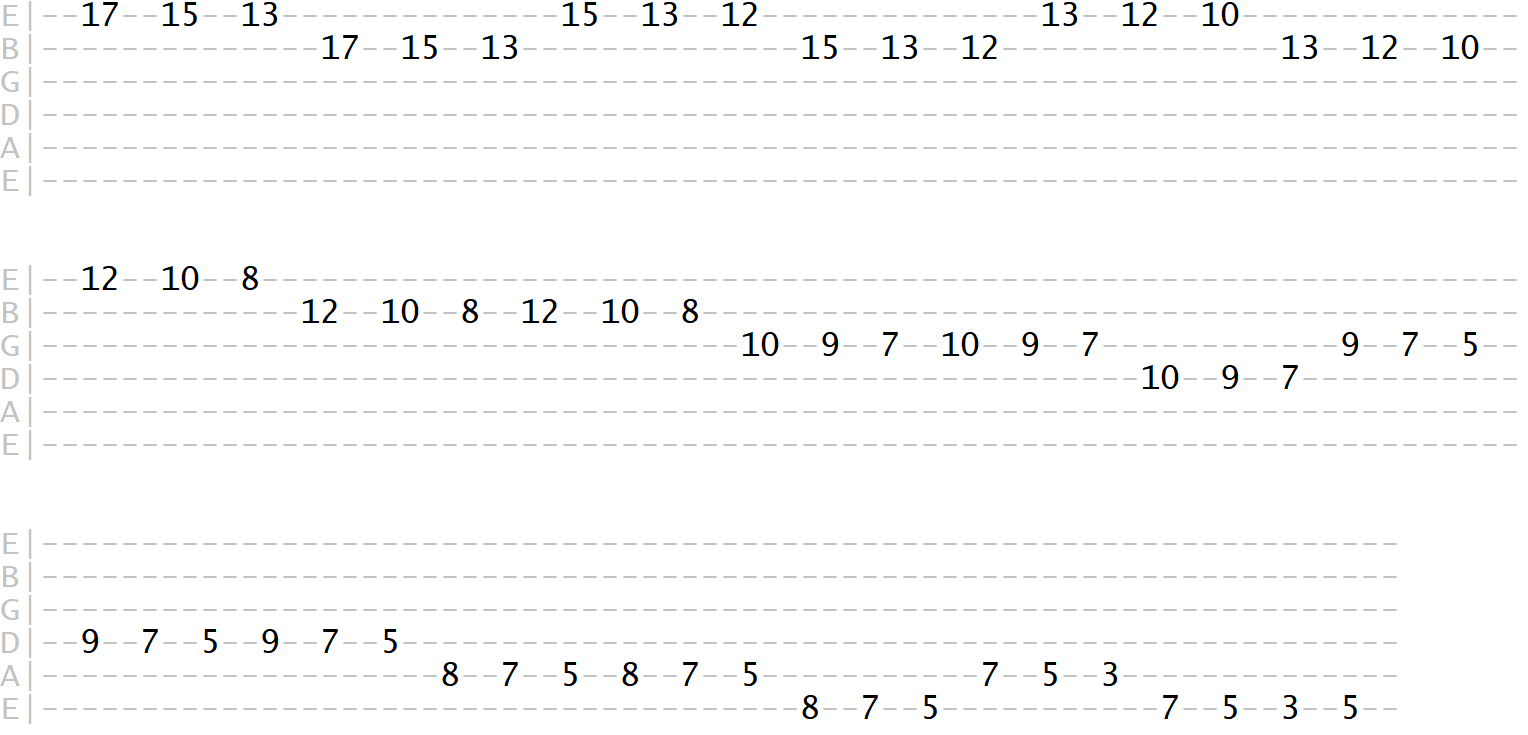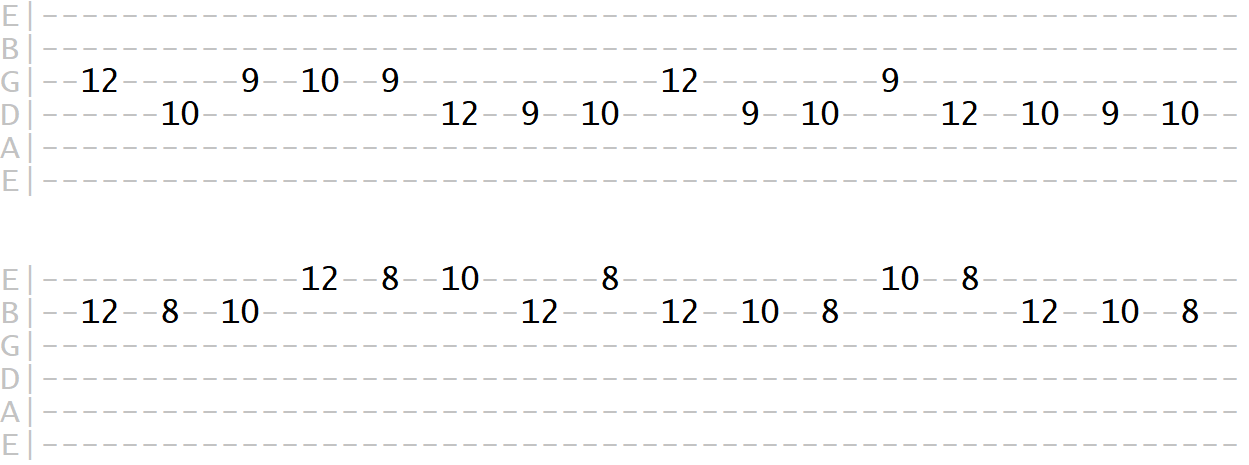Hexatonic Patterns From The Major Scale
First we need to be aware of how these hexatonic patterns are positioned on the neck in relation to the key we're playing in.
Let's begin in C major. Here I've mapped out the seven-tone C major scale. This will cover all the natural chords that may occur in a C major key progression, or its relative A minor key, plus all the modes of C major. More on that later...
Now, we're gonna break up this core pattern into five hexatonic patterns, each one three-notes-per-string, all within close proximity to one another. As you can see, each pattern has a repeating sequence of six tones divided into three string pairings...
Caveat: As there are seven tones in the full major scale, we could potentially have seven hexatonic patterns, each one starting on one of the seven tones. However, we're just focusing on what I believe are the most accessible patterns in this lesson. They will give us more than enough mileage across the neck for any chord in the diatonic key.
Our first pattern can be seen as formed around three root positions. Descending, we'd form the first string pairing sequence around the C note on the 1st string, 8th fret. Notice how our index finger is positioned on this root...
This sequence then gets repeated on our next string pairing, using the same fingering. Again, our index finger is positioned on the C root, this time on the 3rd string...
And a final repetition on our lowest string pairing. We can visualise this string pairing as formed around the C note on the 5th string, 3rd fret, so we could use this as a reference position for ascending the pattern...
Practice moving up and down the full pattern. For these wider patterns, ensure your thumb is positioned at the center of the back of the neck for maximum reach...
Tip: Use a metronome to get up to speed. Start as slow as you find comfortable and use increments of 5 BPM, only notching up the metronome when you can play cleanly at the current tempo.
Shortly, we'll look at different ways we can navigate and break up this pattern. For now we're just learning the roadmap.
Our next hexatonic pattern can be formed two frets up from the previous root, with a slightly different fingering sequence. But again, this sequence gets repeated across the same three string pairings. Again, be aware of the root positions within this pattern...
On to our third pattern. Another repeating sequence across the three string pairings. Once again, become aware of the root positions as references for starting in this pattern...
Fourth pattern. As the top part of the pattern is higher up the neck, and the fret spaces narrower, we can use our 3rd instead of 4th finger if preferred (use whatever fingering is most comfortable for the playing situation)...
And finally the fifth pattern. This is the odd one out because we alternate the fingering sequence within each string pairing. Again, we just have to move up the neck slightly to accomodate this pattern...
Notice how the root position for this pattern is the same as our first pattern. This is easier to see if we play the 5th pattern an octave lower...
So this final pattern can be seen as linking up to the first.
Hexatonic Patterns Over Chords In A Key
Not only are these four patterns convenient because of their repeating fingering sequence, they're also versatile because, like the seven-tone major scale, they'll work over all the natural chords in the major and relative minor keys (that's C major and A minor in this example).
For example, if our C major key progression moved to the 4 (IV) chord, F major, these patterns would give us the natural colour tones of that chord, without having to change from the tonic position of C. This would be the equivalent of a Lydian flavour...
Playing these patterns over D minor, the 2 (ii) chord, will give us a Dorian flavour...
And the relative A minor tonic (vi of C major) can also be covered by our C major patterns...
Hexatonic Patterns In Common Keys
Here I've provided the same patterns from above in several keys. Feel free to adjust the suggested fingering as you see fit. The patterns always follow the same sequence, we just change the root according to the parent key.
Remember in the 5th pattern I need to adjust the fretboard position. The fret numbers are below each diagram for reference.
So above we covered the C major / A minor keys...
Chords: D / Em / F#m / G / A / Bm / C#dim
Also covers: B minor key and related modes of E Dorian / G Lydian / A Mixolydian
Chords: E / F#m / G#m / A / B / C#m / D#dim
Also covers: C# minor key and related modes of F# Dorian / A Lydian / B Mixolydian
Chords: G / Am / Bm / C / D / Em / F#dim
Also covers: E minor key and related modes of A Dorian / C Lydian / D Mixolydian
Hexatonic Scale Navigation & Phrasing
Once we've memorised the patterns, we can start to navigate them in more interesting and dynamic ways. For example, instead of playing a linear ascending or descending run, we can add in more repetition to each string pairing. Some examples (using C major as our parent pattern)...
Tip: Remember we can use legato (hammer-ons / pull-offs) with these patterns as well as pick them. Some players prefer legato for faster runs, but both offer different sounds.
As well as sequential runs, we can also phrase around these patterns in a more open and improvised way, incorporating techniques such as sliding and string bending. I'm using the below pattern (our first pattern from earlier) for this one over a C major key progression...

There's also the option of combining and interchanging between patterns in the same sequence. This has the effect of prolonging our scale runs and also mixing up different tone combinations. For example, we could interchange between our 2nd and 3rd pattern in the following way...

An even more prolonged connection of these patterns...
So although we're still effectively using these hexatonic sequences, moving fluidly between them is just one way of navigating and expressing the parent seven tone scale.
And we don't always have to play across the entire pattern from high to low or vice versa. Try isolating a string pairing and creating repeating sequences around just those strings...
We can of course apply the same hexatonic concept to other scales such as harmonic minor and melodic minor. More on that another time. In the meantime, use these patterns to link up other scale movements (e.g. heptatonic and pentatonic).
The aim is to be able to move fluidly between different areas of the neck and make use of different patterns no matter where you are. I hope this helped!
